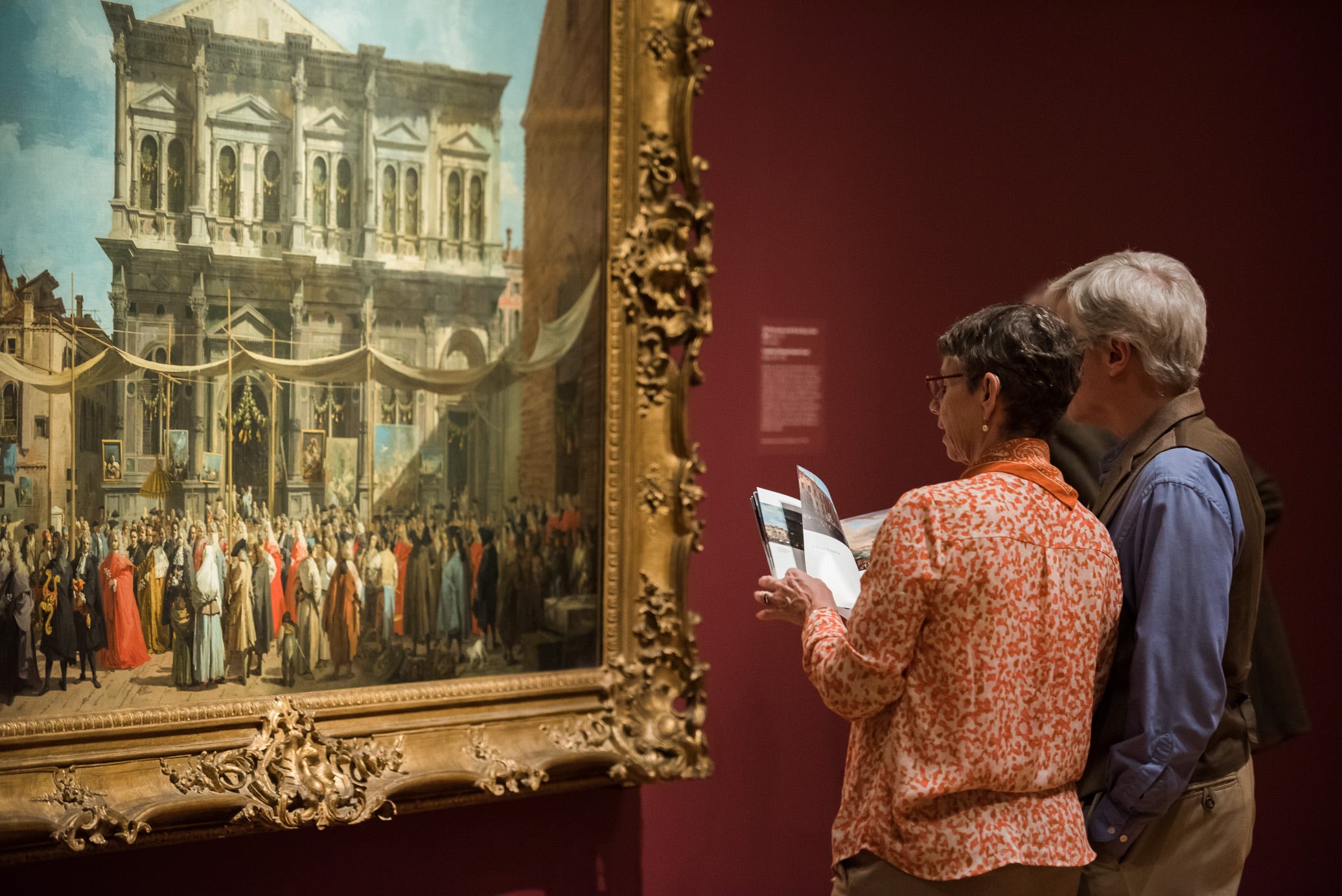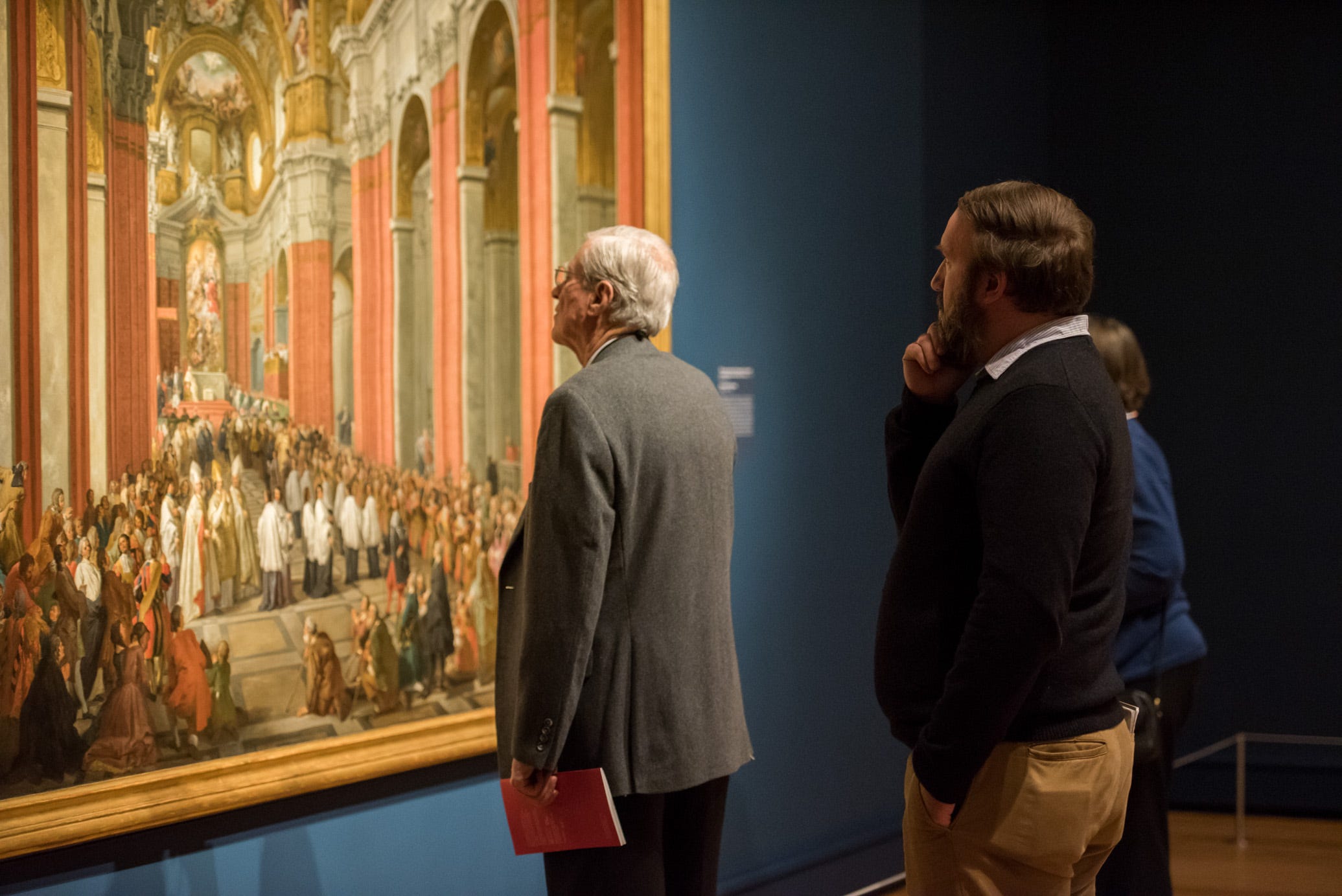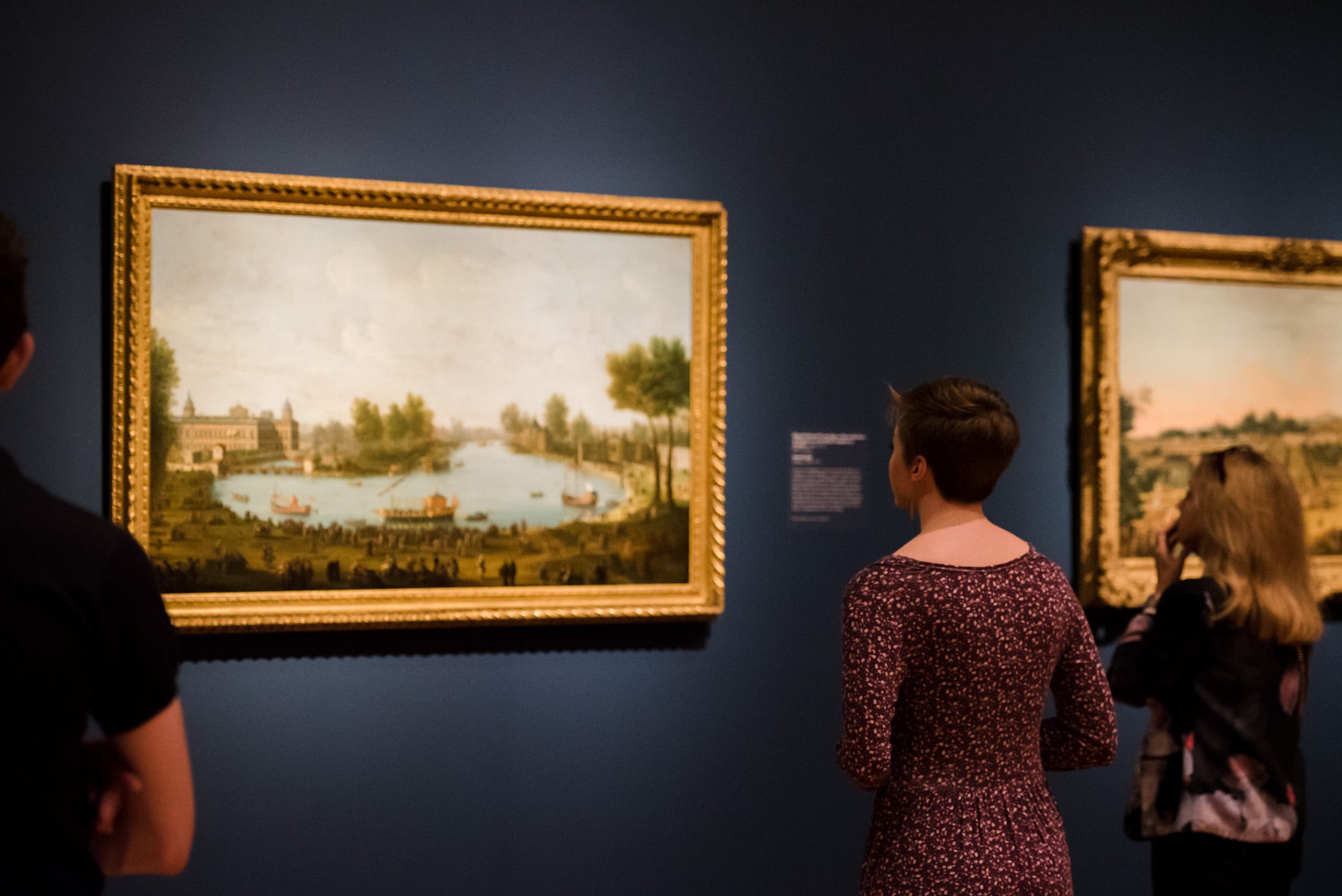Panini from Another Perspective: Works by Panini on View Now at the CMA
- Blog Post
- Exhibitions

One of the most celebrated view painters in eighteenth-century Rome, Giovanni Paolo Panini’s powers of observation and ability to capture precise detail have allowed his works to stand the test of time.
CMA visitors have an opportunity to see monumental works from this artist on view in both the permanent collection and in the current special exhibition Eyewitness Views: Making History in Eighteenth-Century Europe.
The CMA’s masterwork by Panini, Interior of the Pantheon, Rome (1747) is on view now in gallery 217.

One of the great monuments of antiquity, Rome’s Pantheon was created as a temple around the year AD 125. It is a circular structure, capped by a huge hemispherical dome with a central opening that allows light into the interior. A marvel of engineering, nearly 2,000 years later the Pantheon is still the world’s largest unreinforced concrete dome. In 609 the Pantheon became a Christian church, which helped ensure its continued preservation. Panini manipulated the perspective here to include more of the interior than is actually possible to see from any single angle. At the far side, the portal opens to the colossal columns of the porch and a glimpse of the piazza beyond. Panini populated the interior with a lively mix of tourists, churchgoers, artists, and citizens from all social strata to express the daily bustle of this popular public space.
Additional paintings by Panini and his contemporaries can be seen in Eyewitness Views: Making History in Eighteenth-Century Europe, on view in the CMA’s Kelvin and Eleanor Smith Foundation Exhibition Hall through May 20.
Eyewitness Views showcases view paintings — monumental works that vividly re-create what it was like to be present at some of the most newsworthy events and impressive spectacles of eighteenth-century Europe — the style of painting for which Panini was known.
“Many of these works, which simultaneously record an occasion and its topographical setting, are milestones in the careers of the century’s leading view painters such as Guardi, Canaletto, and Giovanni Paolo Panini, who were spurred to create works of extraordinary artistic quality for a number of reasons: the opportunity to serve a prestigious clientele of kings, princes, and ambassadors; generous financial rewards and follow-up commissions; the inspiration of events characterized by lavish pageantry and a vibrant atmosphere; and, in many cases the chance to work on a monumental scale that the regular tourist-driven market for view paintings rarely allowed.” — Peter Björn Kerber, former assistant curator of paintings at the J. Paul Getty Museum and curator of Eyewitness Views.
“Many of these works, which simultaneously record an occasion and its topographical setting, are milestones in the careers of the century’s leading view painters such as Guardi, Canaletto, and Giovanni Paolo Panini…” — Peter Björn Kerber, former assistant curator of paintings at the J. Paul Getty Museum and curator of Eyewitness Views
See examples of Panini’s works from Eyewitness Views below, and see them in person through May 20.

This painting and several others displayed nearby in the exhibition record key events in the life of Charles of Bourbon, king of Naples and subsequently king of Spain. Charles traveled to Rome for an audience with Pope Benedict XIV on November 3, 1744. To memorialize the occasion, he commissioned this depiction of his arrival at the pope’s “Coffee House” pavilion in the gardens of the Quirinal Palace. Panini amplified the building’s architecture to increase the grandeur of the scene. He extended the side wings from one- to two-window axes and doubled the pilasters and busts, thereby transforming the modest pavilion into a small palace.

From an elevated viewpoint near the entrance, the viewer can look down the nave of Saint Peter’s in Rome toward the high altar and the magnificent bronze baldachin created by Gian Lorenzo Bernini. While architectural splendor is the painting’s main subject, this work was commissioned to commemorate a specific event: on April 5, 1756, Étienne-François, comte de Choiseul-Stainville (later duc de Choiseul), paid an official visit to the basilica as part of his accreditation as French ambassador to the Holy See. Illuminated by a shaft of light, Choiseul (wearing a gold-embroidered waistcoat) and his entourage are at center right, preceded by a cardinal in red robes.
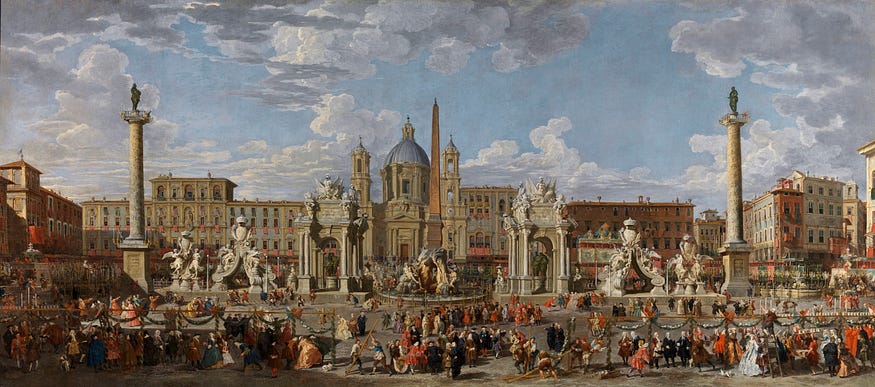
Another French ambassador to the Holy See, Cardinal Melchior de Polignac was charged with organizing a celebration to mark the birth of the king’s first son (and heir to the throne) in September 1729. Here, an army of workers scurry to transform the Piazza Navona into an open-air ballroom with elaborate ephemeral decorations designed by the artist Pier Leone Ghezzi. Polignac himself — in the center foreground, wearing red stockings — directs the preparations. Paradoxically, Panini’s documentation of the celebration was possibly more important to Polignac than the event itself. The ambassador commissioned two versions of the painting, one for himself and one for the king: a permanent advertisement of his personal generosity and service to the French crown.

To celebrate the birth of a new royal heir, the French ambassador staged a ball in the Palazzo Farnese, the French embassy in Rome. In the center of the floor, the French representative and the wife of the Venetian ambassador are about to open the dance. The setting for the event, the cavernous “Grand Salon,” had been left unfinished at the palazzo’s completion, but for this occasion it was transformed into a glittering ballroom by Giuseppe Panini, the painter’s son. Father and son worked closely together to provide elite patrons a unique offer: a celebration could be designed from the outset with its only lasting record — the painted canvas — in mind.
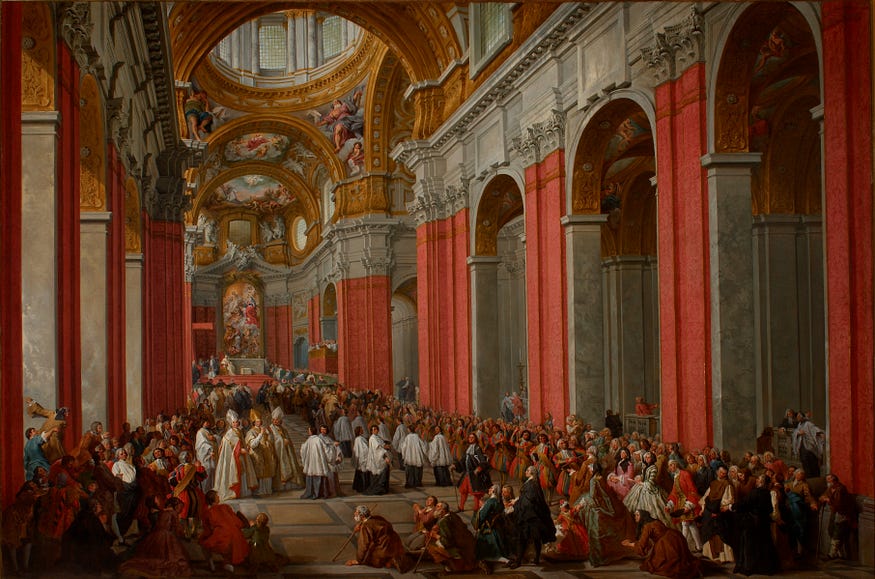
The Roman church of San Carlo al Corso — dedicated to Saint Charles Borromeo, a former archbishop of Milan was the setting for the consecration of Giuseppe Pozzobonelli as the new archbishop of Milan in 1743. As a mark of his esteem for Pozzobonelli, Pope Benedict XIV himself performed the rite. Dressed in white, Benedict sits at the high altar in the background. The ceremony has just finished, and the new archbishop, wearing a golden miter, moves in a procession toward the front of the church. Flanked by two bishops, he imparts a blessing on the crowd with his right hand.
See a series of installation shots from Eyewitness Views below, and don’t miss your opportunity to check out the work of this masterful view painter and his contemporaries in person.




